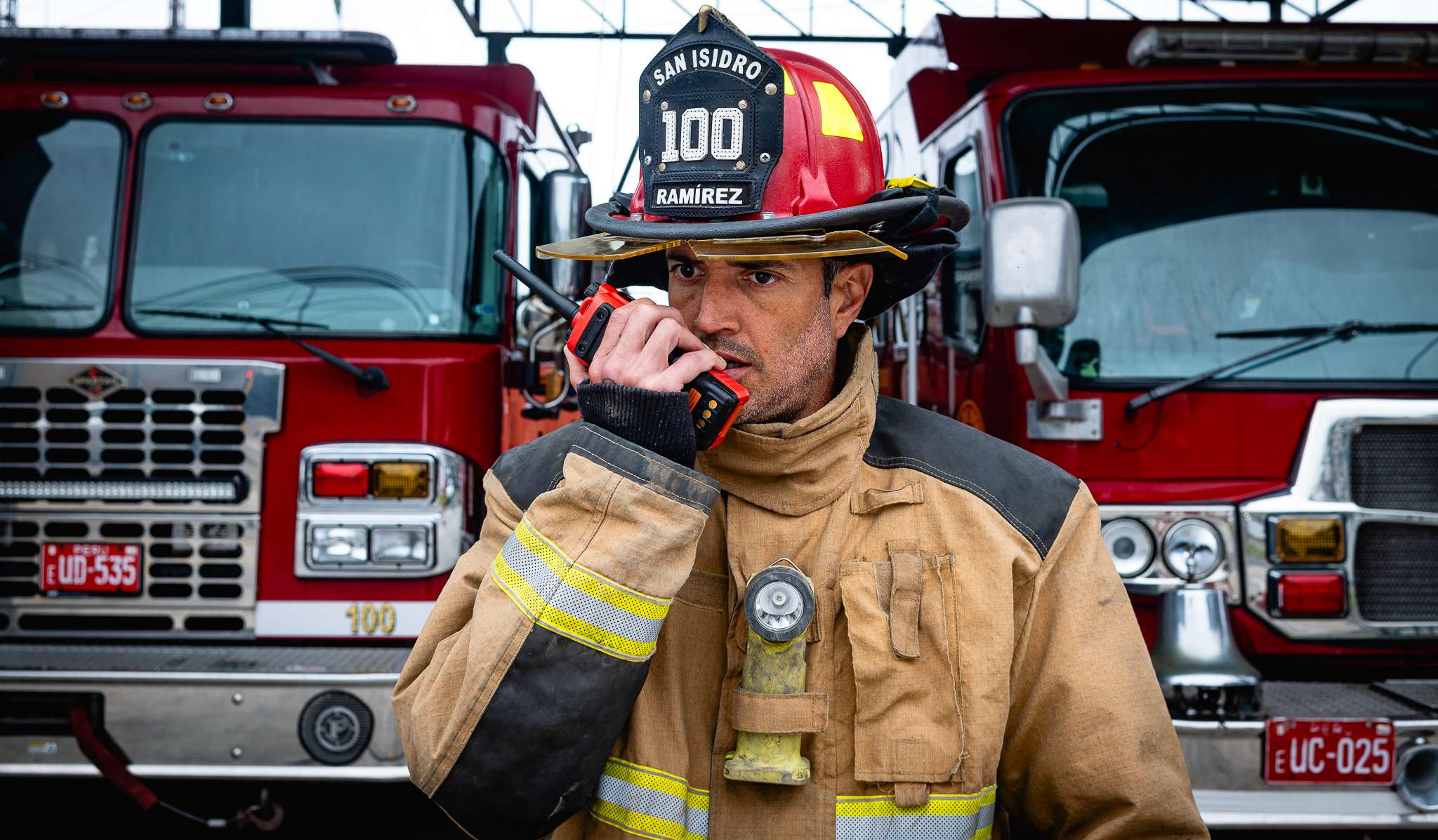The Importance of Effective Communication for Firefighters
Two-way Radio
Firefighting is one of the most demanding and dangerous jobs in the world. Whether responding to a house fire, industrial accident, or wildland blaze, firefighters face extreme conditions, unpredictable hazards, and life-or-death decisions every day. In these high-pressure environments, clear and reliable communication is not just helpful — it's essential.
At Hytera, we understand the unique challenges that firefighting teams face. That's why we've developed a range of professional communication solutions designed specifically for emergency response to keep first responders connected, coordinated, and safe.

Real-World Challenges on the Fireground
Imagine this: A team of firefighters is inside a smoke-filled building, navigating through narrow corridors, searching for trapped victims. The visibility is near zero. Temperatures are rising. The structure is unstable. They need constant updates from the incident commander outside — Is the fire spreading? Has backup arrived? Do they need to evacuate?
Now picture that team trying to work without proper communication. It's a recipe for confusion, delay, and potential tragedy. From coordinating hose lines and ventilation to monitoring crew locations and issuing evacuation orders, radio communication is the lifeline that ties every part of the response together. And when communication breaks down, lives are put at risk — including the lives of the firefighters themselves.

Communication That Works When Nothing Else Does
Hytera‘s DMR two-way radios, like the HP78X and HP79XEx series, are built to perform in the toughest conditions. They're dustproof, waterproof, and drop-tested — made for real emergencies. With features like noise cancellation, emergency alarm functions, and GPS tracking, these radios ensure that frontline firefighters can always hear and be heard, even in noisy, chaotic scenes.
25In large-scale operations, where multiple teams or agencies are involved, Hytera's trunking systems — such as our DS-6250S DMR Tier III system — enable group calls, private calls, and dispatch coordination across wide areas. Incident commanders can communicate with every unit on the ground in real-time, ensuring smooth cooperation and fast decision-making.
9And when disasters strike in remote or infrastructure-damaged areas? Hytera's emergency communication solutions, like the E-pack200 ad-hoc repeater or Rapid Deployment System, can instantly set up a mobile network — no towers, no cables, just plug and go. That's critical in earthquake zones, mountain rescues, or post-storm response where normal networks are down.
10Designed for the Firefighting Mission
Every Hytera product is designed with input from real users — firefighters, first responders, and incident commanders — so we know what matters most on the ground. Here are a few features our firefighting customers rely on:
Emergency Button: One press sends an alarm with location info to dispatch, helping locate injured or trapped team members fast.
Man Down Detection: If a firefighter falls and doesn't move, the radio can auto-alert others.
Noise-Cancelling Audio: Because sirens, chainsaws, and roaring flames shouldn't block critical messages.
Long Battery Life: Some shifts run for 24+ hours; radios need to keep going just as long.
Intrinsically Safe Options: For hazardous environments like chemical plants or fuel fires.
Whether it's a single radio or a full system, every piece is about one thing: keeping firefighters connected when it matters most.
Supporting Heroes with Smart Communication
Effective communication saves time. And in firefighting, time saves lives. When fire crews have reliable, clear, and fast communication tools, they can make better decisions, stay safer, and protect communities more effectively. Hytera is proud to support these everyday heroes with technology that works — not just in labs or test sites, but in real emergencies, in the heat, smoke, and stress of the front line.
Want to learn more?






